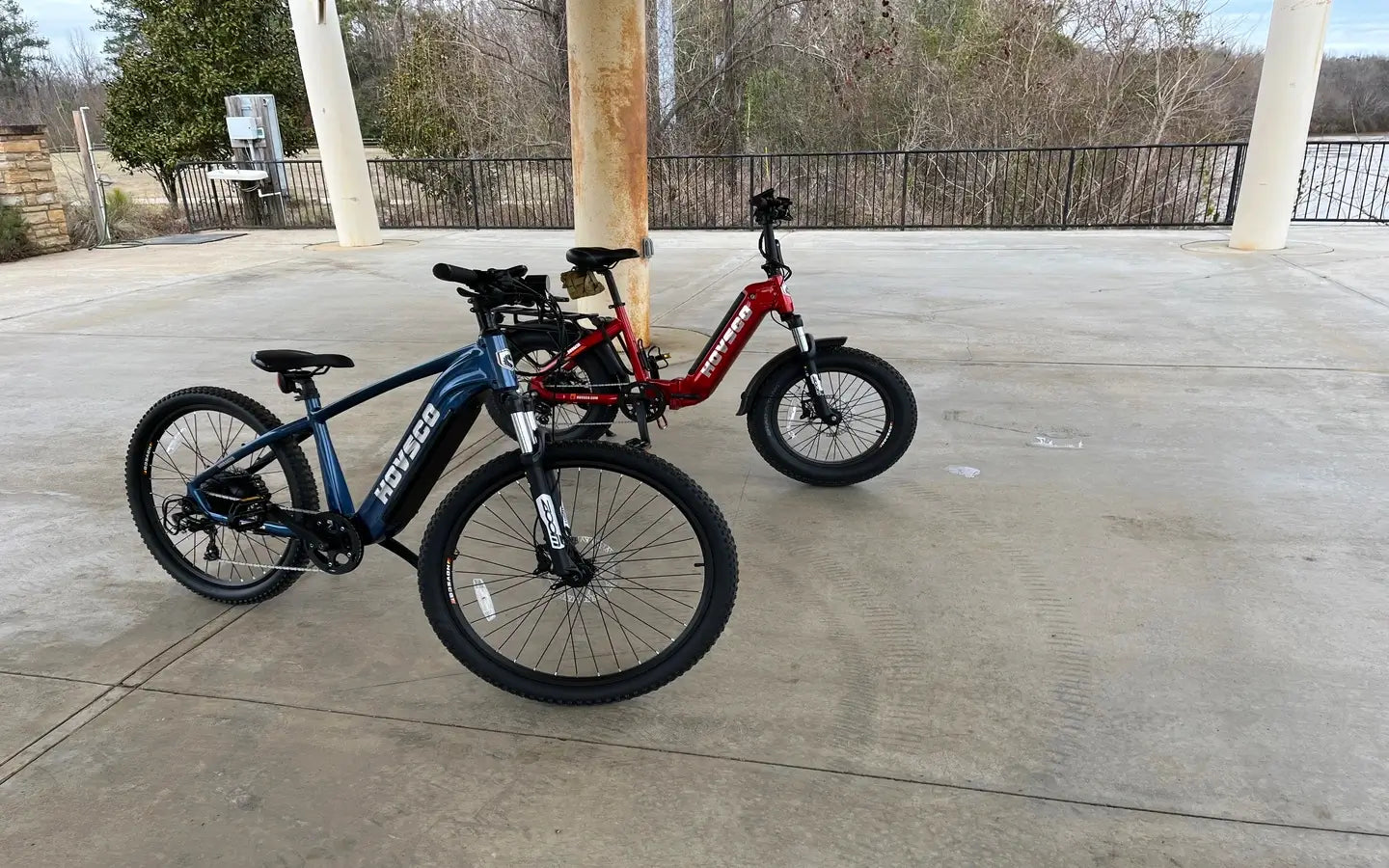
- by LiuJiazhu
Are There Affordable Off-road Ebikes With Long-range Battery Life?
- by LiuJiazhu
Affordable off-road eBikes with long-range batteries do exist, with brands like Ancheer, ECOTRIC, and HOVSCO offering models under $2,000 featuring 500Wh+ batteries and 50+ mile ranges. While compromises like heavier frames or basic suspension may apply, these eBikes balance cost and capability for casual riders. Prioritize removable batteries, mid-drive motors, and reinforced frames for rugged terrain. Why Choose HOVSCO Durable Electric Mountain Bikes?
Off-road eBikes require rugged frames, wide tires, and robust suspension to handle uneven terrain. Key features include 750W+ motors, 4" fat tires, and hydraulic brakes for stability and control. These bikes often have IP65-rated components for weather resistance.
Off-road eBikes are engineered to withstand trails, mud, and steep inclines. A minimum 750W motor provides torque for climbing, while 4–5-inch fat tires improve grip on loose surfaces. Full suspension (front fork + rear shock) absorbs impacts, and hydraulic disc brakes ensure reliable stopping power. For battery life, look for 48V 15Ah (720Wh) systems offering 40–60 miles per charge, though terrain and assist levels drastically affect range. Pro tip: Opt for a mid-drive motor if tackling hills—it leverages the bike’s gears for efficiency. Think of it as a mountain bike’s muscular cousin: built tougher, with electric muscle to conquer trails that’d leave traditional bikes wheezing.
Budget off-road eBikes range from $1,200–$3,000, offering core features without premium materials. Brands like Swagtron and Nakto cut costs with alloy (not carbon) frames and basic LCD displays but retain 50+ mile batteries.
Affordability in this category means balancing performance with cost-saving compromises. For under \$2,000, you’ll typically get a 500–750W hub motor instead of a mid-drive, a 48V 10–15Ah battery, and mechanical rather than hydraulic brakes. Suspension might be a basic coil fork instead of air-based. But practically speaking, these bikes still handle moderate trails. A key trade-off is weight: budget models often use steel frames, adding 5–10 lbs over aluminum. Pro tip: Wait for holiday sales—brands like ECOTRIC often discount prior-year models by 20–30%. Imagine buying a hatchback instead of an SUV: it’ll get you off-road, but don’t expect luxury finishes.
| Budget ($1,500) | Premium ($4,000+) |
|---|---|
| Alloy frame, 65 lbs | Carbon frame, 50 lbs |
| 500W hub motor | 750W mid-drive |
| Mechanical brakes | Hydraulic brakes |
Maximize range by using lower assist levels, maintaining tire pressure, and avoiding extreme temperatures. Opt for bikes with regenerative braking or removable batteries for easy charging.
Battery life hinges on three factors: capacity, riding style, and terrain. A 48V 15Ah (720Wh) battery provides ~55 miles at PAS 1 on flat roads but drops to 25 miles at PAS 5 on hills. To stretch range, keep tires at 20–30 PSI for reduced rolling resistance and use PAS 2–3—this leverages your pedaling while easing motor strain. Storing the battery in 50–70°F conditions prevents capacity loss. Pro tip: Charge to 80% for daily use; full 100% charges strain lithium cells over time. Think of the battery like a water bottle: sip steadily, and it lasts longer than chugging between refills.
Focus on motor torque (65+Nm), battery capacity (600Wh+), and tire width (4”+). Secondary priorities include suspension type (air > coil) and brake quality (hydraulic preferred).
For off-road use, torque matters more than motor wattage. A 750W hub motor with 70Nm torque outperforms a 1000W model with 50Nm on steep climbs. Battery-wise, 48V systems are more efficient than 36V under load. Fat tires (4–5”) prevent sinking in sand/mud, while puncture-resistant liners reduce flats. If forced to choose, prioritize battery and motor over suspension—you can upgrade forks later. Pro tip: Check the derailleur guard; cheap models often lack this, risking damage on rocky trails. It’s like prioritizing a reliable engine over leather seats in a car.
| Feature | Budget Pick | Ideal Pick |
|---|---|---|
| Motor | 750W hub | 750W mid-drive |
| Battery | 48V 12Ah (576Wh) | 48V 20Ah (960Wh) |
| Brakes | Mechanical disc | Hydraulic disc |
Yes, with proper maintenance. Reinforced frames, sealed bearings, and rust-resistant chains extend lifespan. Avoid sub-$1,000 models with thin weld joints or plastic gears.
Durability hinges on build quality. Check for welded (not bolted) frame joints and stainless steel spokes. Budget bikes may use basic Suntour forks needing annual servicing versus premium Rockshox units lasting years. The chain and drivetrain are wear points—lubricate monthly and replace chains every 500–700 miles. Pro tip: Apply frame protectors to prevent cable abrasion. These bikes are like economy cars: they’ll last 3–5 years with regular tune-ups but won’t handle abuse like a $10,000 mountain bike.
Ancheer, ECOTRIC, and Happyrun lead in sub-$2,000 off-road eBikes. Key models include the ECOTRIC 900W (55-mile range) and Ancheer 500W (60-mile range), both with fat tires and dual suspension.
ECOTRIC’s Seagull model ($1,599) packs a 900W peak motor and 48V 13Ah battery, tackling 15° hills. Ancheer’s Folding eBike (\$1,299) offers portability with a 50-mile range. Happyrun’s Tank G60 ($1,899) includes hydraulic brakes—a rarity under $2K. Pro tip: Check warranty terms—ECOTRIC offers 2 years on the motor vs. Ancheer’s 1 year. It’s akin to choosing between Toyota and Honda: both reliable, but differing in aftercare.
Yes, most brands sell higher-capacity batteries (e.g., 48V 20Ah) as add-ons, but ensure compatibility with your motor’s voltage and connector type.
How long do budget eBike batteries last?2–4 years or 500–800 charge cycles. Avoid extreme heat/cold and deep discharges to maximize lifespan.
Are cheap off-road eBikes water-resistant?Most have IP54 ratings—safe for light rain but avoid submerging components. Apply dielectric grease to connectors for added protection.
Share:
What Are the Best Off-Road eBikes for Rugged Mountain Trails?
How Do Lightweight Off-Road eBike Frames Enhance Trail Maneuverability?